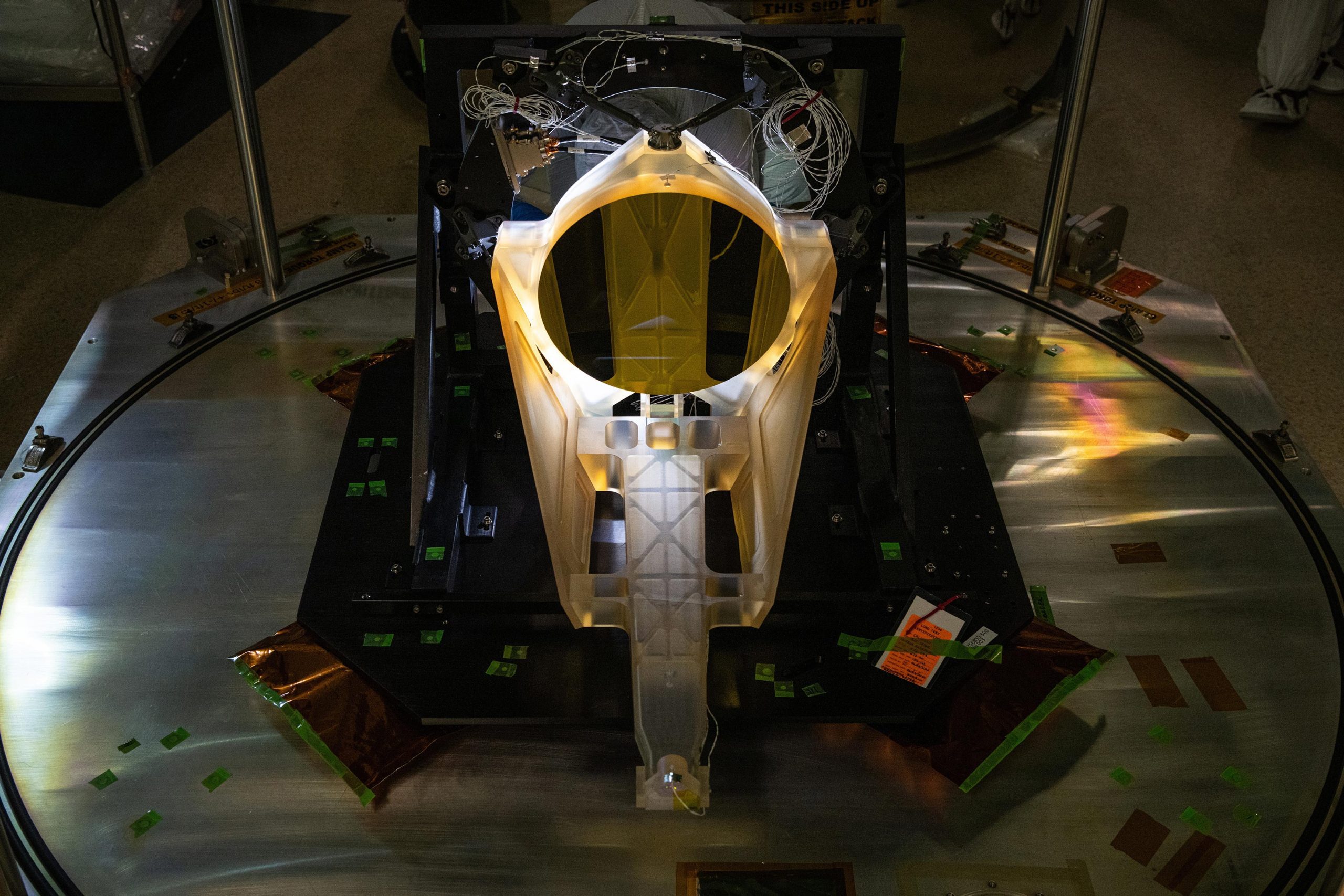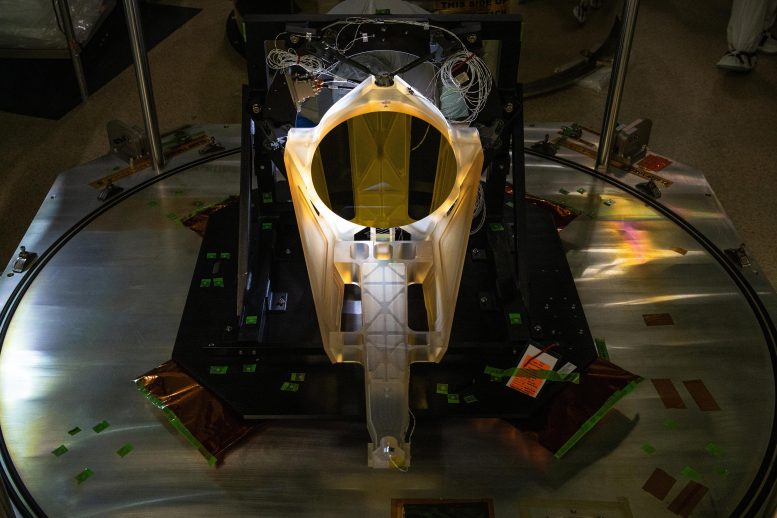

The LISA mission, a joint venture between NASA and ESA, will explore gravitational waves via a space-based array of laser-equipped spacecraft. A prototype telescope has been revealed, signaling a significant step toward the mission’s anticipated 2030s launch.
NASA has unveiled a full-scale prototype for six telescopes, marking a significant step toward detecting gravitational waves from space within the next decade. These waves, or ripples in space-time, are produced by cosmic events like merging black holes.

This project, known as the Laser Interferometer Space Antenna (LISA), is a collaboration led by the European Space Agency (ESA) with NASA’s partnership. LISA will use lasers to measure extremely precise distances—down to picometers, or trillionths of a meter—between three spacecraft arranged in a massive triangular formation, with each side spanning about 1.6 million miles (2.5 million kilometers).
The LISA (Laser Interferometer Space Antenna) mission is led by ESA (European Space Agency) in partnership with NASA to detect gravitational waves by using lasers to measure precise distances — down to picometers, or trillionths of a meter — between a trio of spacecraft distributed in a vast configuration larger than the Sun. Each side of the triangular array will measure nearly 1.6 million miles, or 2.5 million kilometers.

“Twin telescopes aboard each spacecraft will both transmit and receive infrared laser beams to track their companions, and NASA is supplying all six of them to the LISA mission,” said Ryan DeRosa, a researcher at NASA’s Goddard Space Flight Center in Greenbelt, Maryland. “The prototype, called the Engineering Development Unit Telescope, will guide us as we work toward building the flight hardware.”
The Engineering Development Unit Telescope, which was manufactured and assembled by L3Harris Technologies in Rochester, New York, arrived at Goddard in May. The primary mirror is coated in gold to better reflect the infrared lasers and to reduce heat loss from a surface exposed to cold space since the telescope will operate best when close to room temperature.

The prototype is made entirely from an amber-colored glass-ceramic called Zerodur, manufactured by Schott in Mainz, Germany. The material is widely used for telescope mirrors and other applications requiring high precision because its shape changes very little over a wide range of temperatures.
The LISA mission is slated to launch in the mid-2030s.